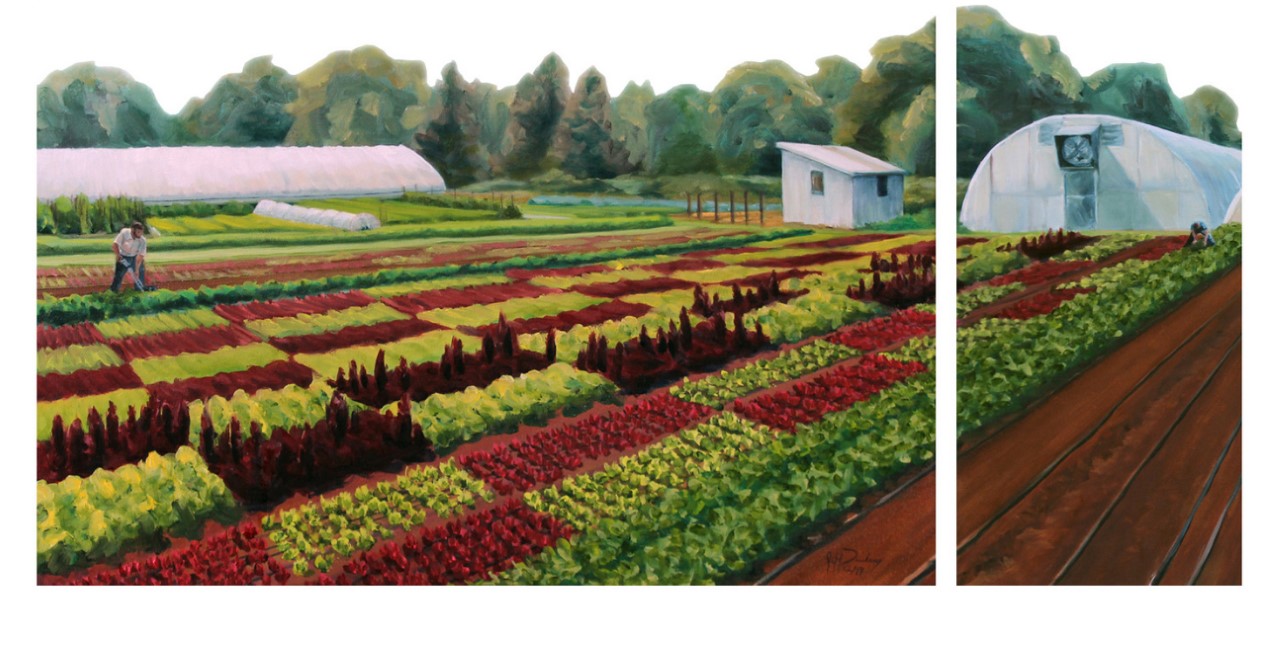 Painting by Jeff Diesburg
Painting by Jeff Diesburg
Diesburg addressed an audience of students, faculty and staff about his sabbatical work painting local farms. His paintings are displayed in Gallery G in the Upper JYSC.
Diesburg Paints Local Farms, Displays Final Product
Sam France
Art professor Jeff Diesburg took his landscape painting inside Cordier Auditorium for a VIA on Sept. 20. Diesburg started his presentation by asking the audience, “What do you do well?” He went on to add that it must be something the audience works on and produces some output.
This question relates to the concept of “sabbatical,” which comes from a tradition in the Hebrew Bible of Shabbat, where people rest, reflect and pray. Universities have adopted this tradition and put it to use with their professors to give them time to research and create within their discipline. Diesburg received a semester off from teaching and created his landscape paintings, which are displayed on the second floor of the JYSC in Gallery G.
Diesburg noted that his paintings are usually surreal figurative work, things that don’t really exist. During his 2019 sabbatical, he painted three landscapes of different farms in the area. Since Diesburg doesn’t typically produce realistic paintings, he had to find something he could paint. He explained how his family is connected to the local agricultural produce in the area and that there are around 20 million acres of farmland, with 20,000 of those acres providing food for people. He also stated that the three farms that he painted in the area, the Kidneys, Hawkins, and Fingerles farms, approach farm differently. They all plant seeds, raise them and harvest them with their hands.
Before Diesburg started sketching anything, he went to each farm and took reference photos. He did not recreate most photos as his paintings, but he took them to focus on buildings, rows, colors, details and the workers. Then he spent 4-5 hours a day for two weeks working on small sketches while referencing to his photos. After he kept finding himself making the sketches large, he then realized he wanted to focus on the horizon of the landscapes.
The Hawkins farm was the first one he painted, and he tried not to add photo-like detail, his interpretation is simpler. But as he was not used to drawing simpler, had to put a good amount of detail in it as well. Every line in the painting comes to a point that creates that landscape and horizon effect. To make it look even more engaging, Diesburg would bend the side views of the horizon. This gives the painting an illusion effect which viewers can see in the gallery. This painting shows rows of crops at the bottom and the horizon with clouds filling the sky at the top.
During the short Q&A at the end of the VIA, Diesburg was asked what some of the things are he will bring back into his classroom from these paintings. He created an assignment based off his paintings: the students must do what he did, they take a picture of a landscape and paint it.